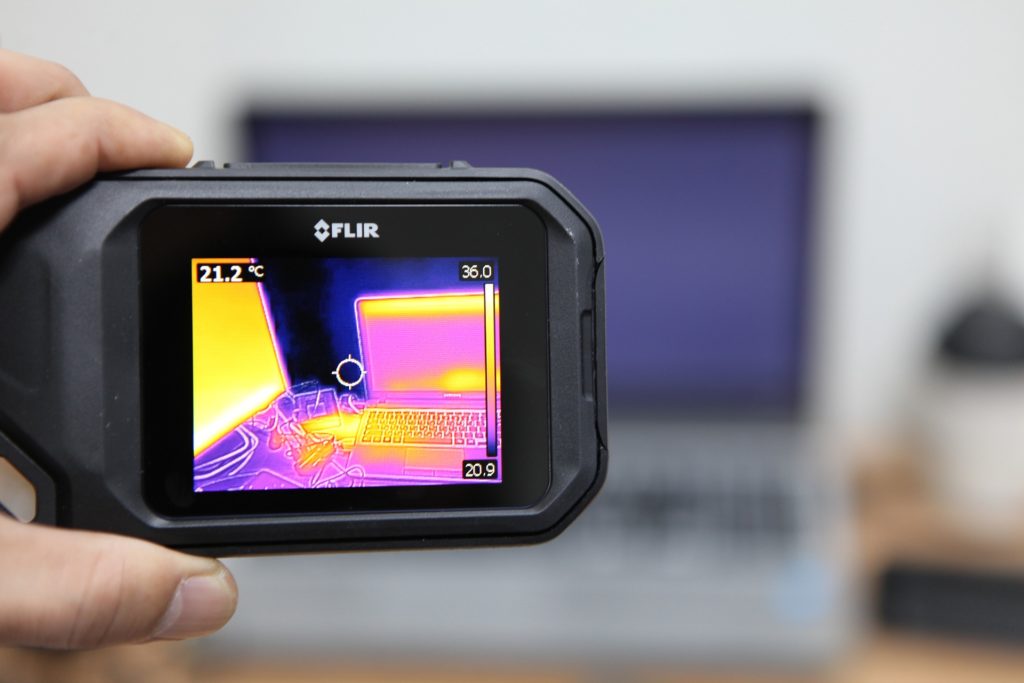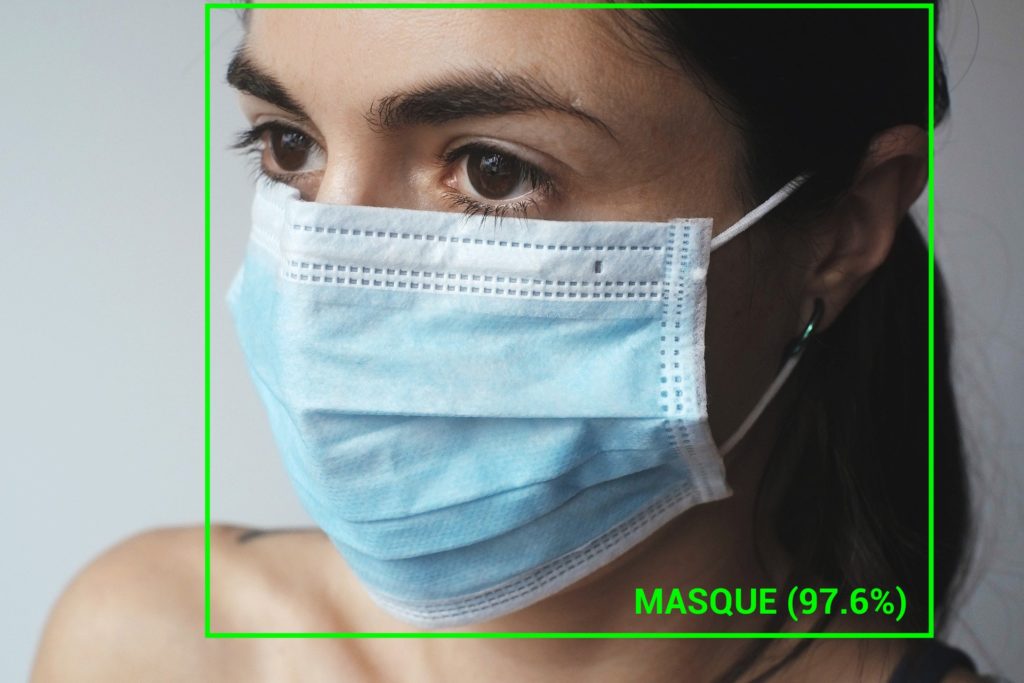There are a number of image processing techniques available to combat a pandemic such as COVID-19. One example is image processing to detect the wearing of a COVID-19 mask.
Today's image processing tools
In recent months, the most talked-about application has undoubtedly been the measurement of body temperature. With a radiometric thermal camera, it is possible to identify a person showing symptoms of fever. This can be done safely, on a large scale and, above all, automatically, in public places.
The American giant Flir®, a leader in thermal imaging, has been in the spotlight on this subject. Their cameras are calibrated to provide radiometric measurements. Each pixel is sensitive to the scene observed, and is capable of accurately estimating the temperature of the target source.

Mask detection to combat COVID-19
Imasolia develops digital image processing to detect the wearing (or absence) of masks. Thanks to an image analysis method based on Deep Learning, the algorithm estimates whether a person is wearing a mask or not. Very useful since July 20, 2020, when wearing a "general public" mask is mandatory in enclosed spaces.

How does it work?
The algorithm is based on the Deep Learning method, which is deep, supervised learning. This means teaching the computer to distinguish between a naked face and one wearing a mask. To do this, we annotated several thousand images "by hand" (in fact, around 2,000). The presence of a mask is indicated by a simple and precise annotation. After this long learning process, the neural network is able to estimate the presence of a mask on a face. And this for any image! Even today, we are still expanding the learning database to improve the system's performance.
What next?
Automatic mask detection can be implemented on an existing video surveillance system. All you need to do is retrieve the video stream from a daylight camera. In other words, a camera with a wavelength in the visible range (400 - 850 µm). We process this stream in real time on an embedded platform of our choice. Imasolia can supply a complete optronic system (camera and onboard processing platform). Or simply the image processing part, plugged into the existing video system. When the absence of a mask is detected, a preventive alert can be triggered in a variety of ways: notification, ringing, light alert, SMS, etc.
Process video
Convinced?
Whether you're a large company, a small business, a public authority or even a retailer, don't hesitate to contact us to discuss your project. We'll be delighted to help you find a solution tailored to your specifications.



